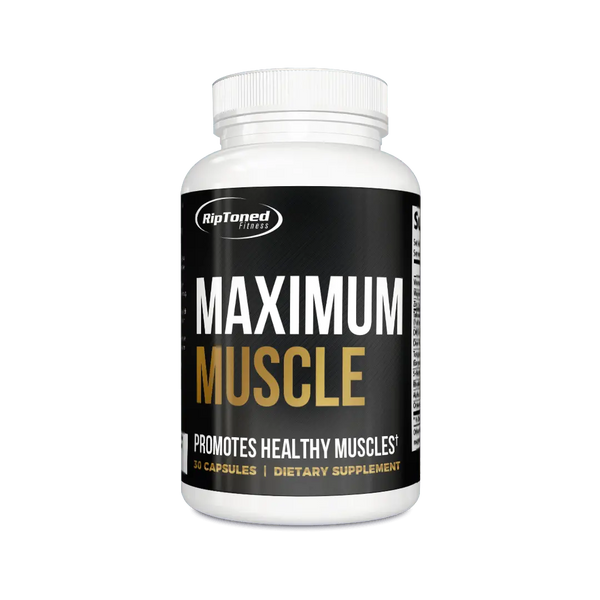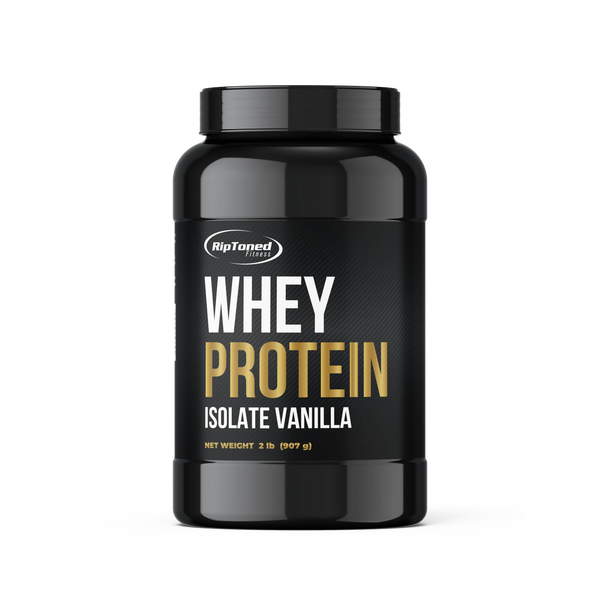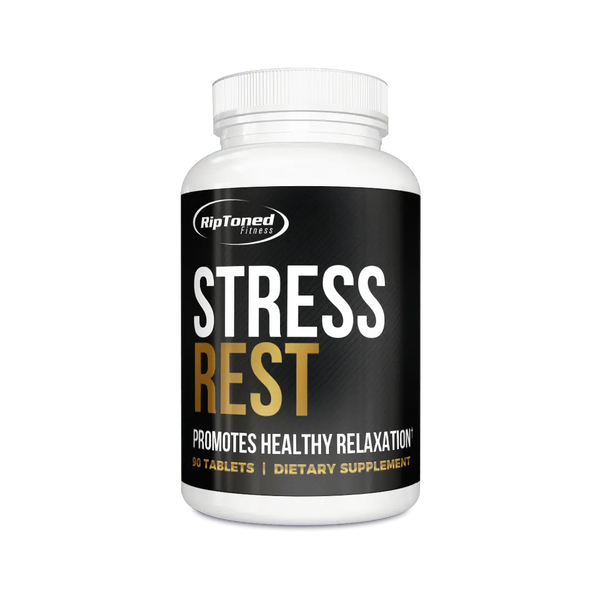
How Does a Weightlifting Belt Work
Mark PasayShare
Weightlifting belts are essential for many strength athletes, providing crucial support during heavy lifts. These belts stabilize the core and spine, allowing lifters to push their limits safely and effectively.
By increasing intra-abdominal pressure, weightlifting belts help enhance performance and reduce injury risks. Understanding how these belts work is vital for maximizing their benefits and ensuring proper use.
Whether you're a seasoned lifter or a newbie, knowing the mechanics behind weightlifting belts can significantly improve your lifting technique and overall strength. Join us as we delve into the fascinating world of weight-lifting belts and uncover their secrets to enhanced lifting.
Anatomy of a Weight lifting Belt
Before understanding how a weight belt works, it's essential to know its main components. Weightlifting belts are typically made of leather or synthetic materials and consist of three main parts: the core, buckle, and prongs.
- The core is the main body of the belt, usually wider in the back and tapering towards the front. This design helps distribute pressure evenly across the abdomen while providing support to the lower back.
- The buckle is located at one end of the belt and acts as a fastening mechanism to secure it around the waist.
- The prongs are attached to the other end of the belt and fit into corresponding holes on the opposite side of the buckle to adjust for a snug fit.
In addition to these main components, weightlifting belts may have additional features such as padding or a contoured shape for added comfort and support. It's important to choose a belt that fits correctly and is comfortable to wear during your workouts.
Types of Weight Belts
There are various types of weightlifting belts, each designed to cater to different lifting needs and preferences. Some popular types include:
- Powerlifting belts: These belts have a uniform width throughout and provide great support for heavy squats and deadlifts.
- Olympic weightlifting belts: These are narrower in the front, allowing more flexibility during dynamic movements like cleans and snatches.
- Velcro belts: Similar to traditional weightlifting belts, but with a velcro closure system instead of prongs and buckles. These allow for quick adjustments and may be preferred by some lifters.
No matter which type you choose, the key is to find one that fits well and supports your specific lifting style. Lever belts or single-prong belts may also be options to consider. Nylon belts are another alternative, often favored by CrossFit athletes for their lightweight and flexible design.
The Purpose of a Weightlifting Belt
Weightlifting belts work by providing external support to the core and lower back during lifts. They are typically made from sturdy materials such as leather, nylon, or suede and wrap around the waist tightly.
The belt's main purpose is to increase intra-abdominal pressure, which refers to the pressure within the abdominal cavity. This pressure acts as a natural weight belt that stabilizes the spine, reducing strain during heavy lifting.
How Intra-Abdominal Pressure Works
Intra-abdominal pressure plays a crucial role in strength training, not just for lifters but also for athletes in other sports like powerlifting and strongman events.
When lifting heavy weights, there is a risk of the spine collapsing or bending forward due to excessive pressure. This can lead to injury and reduce performance. However, by increasing intra-abdominal pressure using a weightlifting belt, the torso becomes more rigid, providing stability and support to the spine. To lift heavy weights safely, lifters must use a combination of both intra-abdominal pressure and proper technique.
To increase intra-abdominal pressure, you must take a deep breath and hold it while engaging the abdominal muscles. Spinal erector muscles also play a role in stabilizing the spine, and a weightlifting belt helps support these muscles as well.
How Does a Weightlifting Belt Work? The Science Behind It
The science behind weightlifting belts is based on the principle of mechanical advantage. Increasing intra-abdominal pressure, they help improve the mechanics of a lift, making it easier to perform.
For example, during a squat, the core muscles are responsible for keeping the spine straight and preventing any rounding or bending forward. However, when lifting heavy weights, these muscles may not be strong enough to maintain proper form throughout the entire movement.
By wearing a weightlifting belt, you create external support for your core muscles. This allows them to focus on stabilizing the spine while minimizing effort. As a result, more energy can be directed towards completing the lift with proper form and greater force.
Benefits of Using a Weightlifting Belt
The main benefits of using a weightlifting belt are enhanced lifting performance and reduced injury risks. By increasing intra-abdominal pressure, weightlifting belts help:
- Protect the lower back: The increased stability and support provided by weightlifting belts can reduce strain on the lower back, reducing the risk of injuries like muscle strains and herniated discs.
- Increase strength: With improved mechanics and reduced energy expenditure, lifters can often lift more weight while wearing a belt compared to without one.
- Improve technique: A stable core allows for better control during lifts, leading to improved form and technique.
- Boost confidence: Knowing that you have added support during heavy lifts can increase your confidence in performing them, allowing you to push your limits safely.
Stiff lifting belt or flexible one, whichever you choose, make sure to use it correctly and avoid relying on it too heavily.
Proper Use of a Weightlifting Belt
Weight-lifting belts are not meant to be worn at all times during workouts. They should only be used for heavy lifts or exercises that place significant stress on the back, such as squats and deadlifts.
Related Products
It's also essential to use a weightlifting belt correctly to reap its benefits fully. Here are some tips for proper usage:
- Position the belt above your hip bones, covering the lower back and abdominal muscles.
- Tighten the belt enough to create pressure but not too tight that it restricts breathing or causes discomfort.
- Breathe into your belly, pushing against the belt to increase intra-abdominal pressure further.
- Use the belt to support proper form and technique rather than relying on it entirely for strength.
Tight belt, loose belt, or something in between. Experiment with different levels of tightness to find what works best for you. Keep in mind that a weightlifting belt should not be used as a substitute for proper form and technique.
Myths and Misconceptions of Weightlifting Belts
Despite their benefits, some myths and misconceptions surround weightlifting belts. Here are some common ones:
- Myth: Weightlifting belts weaken core muscles.
Fact: While it's essential to strengthen your core through exercises like planks and crunches, using a weightlifting belt during heavy lifts does not weaken your core. It allows for more focused engagement of core muscles by providing external support.
- Myth: Wearing a weightlifting belt is cheating.
Fact: Weightlifting belts do not give you an unfair advantage in lifting weights. They provide additional support to help improve form and technique, allowing you to lift heavier weights safely.
- Myth: You should wear a weightlifting belt for all types of exercises.
Fact: Weightlifting belts are only necessary for heavy compound lifts. Wearing one during isolation exercises like bicep curls or tricep extensions is unnecessary and can even hinder proper form and muscle engagement.
How To Pick the Right Weightlifting Belt
When choosing a weightlifting belt, there are several factors to consider:
- Material: The most common materials for weightlifting belts are leather and nylon. Leather tends to be more durable but may take longer to break in. Nylon is lighter and more flexible but may not last as long.
- Width: Weightlifting belts come in various widths, typically ranging from 4 inches to 6 inches. A wider belt offers more support, but it also restricts movement more.
- Closure system: As mentioned earlier, there are two types of closure systems – prongs and buckle or velcro. Choose the one that is most comfortable for you.
- Fit: The most crucial factor is finding a weightlifting belt that fits your waist comfortably. It should be snug but not too tight.
- Quality: A good weightlifting belt will last longer and provide better support than a cheaply made one. Look for brands with positive reviews and a reputation for durability.
Tips for Proper Use of a Weightlifting Belt
To get the most out of your weightlifting belt, it's essential to use it properly. Here are some tips:
- Gradually increase the weight you lift with a belt: Don't jump from lifting without a belt to heavy lifts with one. Start using it for lighter weights and gradually increase as your body adapts to the added support.
- Don't rely solely on the belt: Use the belt to improve form and technique, but continue to strengthen your core muscles through other exercises.
- Listen to your body: If you feel discomfort or pain while wearing a weightlifting belt, stop using it immediately and consult a professional.
Proper belt usage combined with proper form and technique can help you reap the benefits of weightlifting belts and improve your overall lifting performance.
FAQs
What is the primary function of abdominal belts in weightlifting?
The primary function of abdominal belts, also known as weightlifting belts, is to provide support and stability to the lower back and core during heavy lifts. They work by increasing intra-abdominal pressure reducing strain on the lower back muscles. An abdominal belt can also help improve form and technique, leading to better lifting performance.
Does a weightlifting belt make you stronger?
No, a weightlifting belt does not make you stronger. It simply provides external support to help improve form and technique, which can allow for heavier lifts safely. Proper strength training and proper form are still crucial for building strength in the long run.
What are the disadvantages of a weight-lifting belt?
Some potential disadvantages are overdependence, improper use, and potential discomfort or injury if not used correctly. It's essential to use a weightlifting belt properly and not rely on it exclusively for strength during workouts.
Conclusion
In summary, weightlifting belts play a crucial role in enhancing performance and safety during heavy lifts. By increasing intra-abdominal pressure and supporting the spinal erector muscles, these belts help stabilize the core and spine. Proper usage involves taking a deep breath, engaging the abdominal muscles, and using the belt during lifts that significantly load the spine.
Understanding how to effectively use a weightlifting belt can lead to improved lifting techniques and reduced injury risks, making it an invaluable tool for both novice and experienced lifters alike.

Related Posts
-
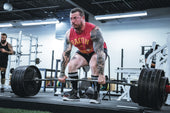
POWERLIFTING THE RIGHT WAY
-
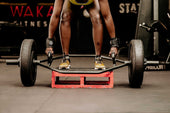
Unlock Your Strength Potential: Conquer Weak Grip Strength Now
-
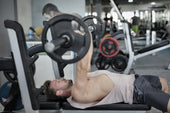
Bench Press to Success - Mastering your form
-
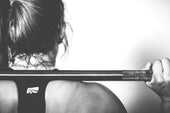
5 Tips for Women to Build Lean Muscle Tone in 2024
-
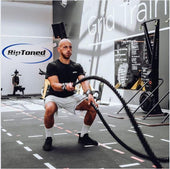
How to Get the Most Out of a Lifting Session
-

Working Out Under the Weather
-
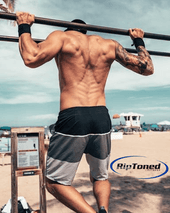
The Lesser-known Benefits of Weightlifting
-

How Weight Training Supports Immune Health
-

The History of Weightlifting
-

Rest up to build up
-
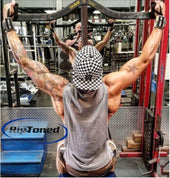
4 Tips to Improve Lifting Gains The Right Way
-

4 Tips to Prevent Training Injuries
-

Top 3 Work Out Myths EXPOSED!!
-
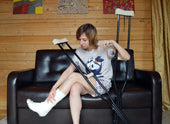
Common Lifting Injuries (And How to Avoid Them)
-

Hit the Gym or Stay at Home?
-

Weightlifting Benefits – Many Health Benefits for Men and Women
-

How Many Times a Week Should I Deadlift? A Guide to Deadlift Frequency and Programming
-

Can Deadlifts Hurt Your Back? Understanding Risks and Prevention
-

Why Does Whey Protein Make Me Sick
-

Can Protein Powder Upset Your Stomach
-

What To Mix Unflavored Protein Powder With
-

Crush Your PRs: The Gradual Strength Increase Guide for CrossFitters
-

Whey vs Collagen Protein: Which Is Best for You?
-

Can I Take Whey Protein Without Working Out? What You Need to Know
-
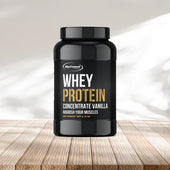
Why Does Whey Protein Hurt My Stomach: Causes and Solutions
-

Boost Your Run: Should You Take Pre-Workout Before Running?
-

Top Pre-Workout Benefits: Boost Energy and Enhance Performance
-
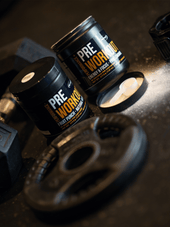
How Long Does Pre-Workout Take to Kick In? Find Out Here!
-
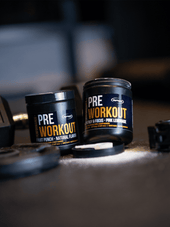
How Long Does Pre-Workout Last? Your Essential Guide
-

Does Pre-Workout Give You Pimples
-

How Long Does Pre-Workout Stay in Your System
-

When Should I Take Pre-Workout
-

Can I Mix Creatine With Pre-Workout
-

Long Term Side Effects of Pre-Workout Supplements
-

How Much Caffeine in Pre-Workout
-

Pre-Workout Alternatives
-

Does Pre-Workout Break a Fast
-

What to Eat Pre-Workout
-

What is In Pre-Workout
-

Advantages of Pre Workout Supplements
-

How To Get Rid Of Pre Workout Itch
-

How To Make Your Own Pre Workout
-

How Many Scoops Of Pre Workout Should I Take
-

How Bad Are Pre Workouts For You
-

How Long Before A Workout Should I Take Pre-Workout
-

How Much Caffeine Is In Bucked Up Pre Workout
-

How Long Does Pre Workout Increase Blood Pressure
-

What Does Pre Workout Do
-

Can I Use Sprite As Pre Workout
-

Can Supplements Boost Weightlifting Motivation
-

Why Do Weightlifters Wear Belts
-

Does Lifting Weights Cause Varicose Veins? What You Need to Know
-

Does Lifting Weights Affect Uterus Health? What Women Need to Know
-

How Lifting Weights Can Affect Your Sex Drive: Does Lifting Weights Make You Horny?
-

Why Don't I Sweat When I Lift Weights? Understanding the Causes
-

Why Are Physical Fitness Attitudes Important? Insights & Benefits
-

Why is Anytime Fitness So Expensive? Understanding Membership Costs
-

Substitute For Whey Protein Powder In Keto Baking
-

How Many Calories Does 1 Hour of Weightlifting Burn
-

A Guide To Cleaner Protein Supplementation
-

What Causes The Frothiness in Your Fitness Drink
-

How to Take Collagen Safely After a Gastric Bypass: Essential Tips
-

Why Do Protein Shakes Make Me Nauseous? Top Reasons and Solutions
-

Why Does My Stomach Hurt After Protein Shake? Understanding Your Digestive Discomfort
-

Can I Take Collagen After Gastric Bypass
-

Why Does My Protein Shake Foam
-

Best Belt for CrossFit: Complete Guide 2025
-

Rip Toned vs SBD Belts: Which Brand Offers Better Value and Performance?
-
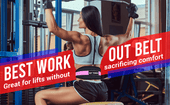
The Complete Guide to Women's Weightlifting Belts
-
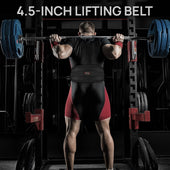
Should Beginners Use a Weightlifting Belt
-

10mm vs 13mm Belt Thickness: The Complete Guide
-

Prong Buckle vs Lever Buckle Belts: The Ultimate Comparison Guide
-
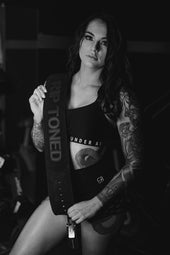
Powerlifting Belts vs Bodybuilding Belts
-

Weightlifting Straps vs. Lifting Hooks: Which is Better?
-

How to Treat Weightlifters Elbow
-

Should You Use Lifting Straps During Bicep Curls for Better Gains?
-

Weightlifting Straps vs. Bare Hands
-

Benefits of Using Weightlifting Straps in Training
-

Mistakes to Avoid When Using Weightlifting Straps
-

Wrist Wraps While Doing Curls
-

Should I Use Wrist Wraps for Bench Press
-

How to Clean Wrist Wraps
-

Are Wrist Wraps Necessary
-

The Ultimate Deadlift Guide: From Form to Performance
-

What Exercises to Use Wrist Wraps For?
-

Are Wrist Wraps Cheating on Bench?
-

Do Wrist Wraps Make You Stronger?
-

Do Wrist Wraps Help With Grip Strength
-

When to Start Using Wrist Wraps
-
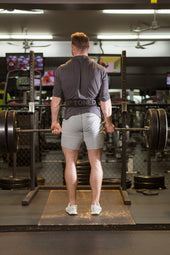
Best Weightlifting Belts 2025: Ultimate Buyer's Guide
-

How to Measure for a Weightlifting Belt
-

Can Wrist Wraps Boost Your Grip Strength in Weightlifting?
-

Should You Use Wrist Wraps for Bench Press and Overhead Press?
-

Do Wrist Wraps Help with Wrist Pain During Strength Training? Find Out Here
-

How Can Wrist Wraps Prevent Injury During Heavy Lifting?
-
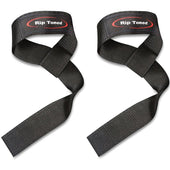
How Do You Use Weightlifting Straps: A Simple Guide for Better Lifts
-

How to Pick a Lifting Belt: A Practical Guide for Every Lifter
-

How to Measure for Lifting Belt
-

Do Weight Lifting Belts Help Lower Back Pain
-

Do I Need a Lifting Belt
-
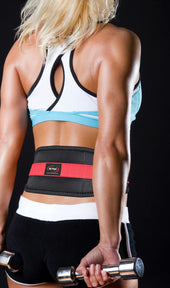
Purpose of Weight Lifting Belt
-
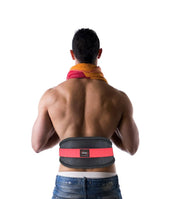
When to Use a Lifting Belt
-

What Does A Lifting Belt Do
-

What Do Wrist Wraps Do For Lifting
-
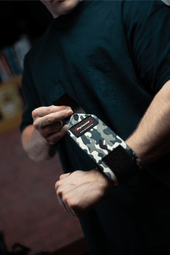
How To Wrap A Wrist For Carpal Tunnel
-

How To Wrap Wrist For Pain
-

What Are Wrist Wraps For
-

How Do You Use Weightlifting Straps
-

Why Is Mental Focus Important in Powerlifting? The Key to Peak Performance
-

Can Bodybuilding Help with Fat Loss? Discover Proven Benefits
-

Mastering the Basics: How to Improve Your Powerlifting Technique
-

Why Is Proper Form Crucial in Powerlifting? Tips for Safe and Effective Lifting
-

Can Powerlifting Increase Athletic Performance? Exploring Strength Gains and Sport Benefits
-

Top Tips on How to Avoid Common Injuries in Bodybuilding
-

Why Is Recovery Essential in Bodybuilding: Key Strategies and Benefits
-

Can Powerlifting Improve Overall Fitness? Explained
-

How Many Deadlifts Should I Do?
-

How Much Can a 17 Year Old Deadlift? Average Weights and Tips
-

Why Aren’t My Arms Growing as Fast as My Chest? Top Reasons Explained
-

How to Do Back Compression Deadlift: Best Tips for Pain-Free Lifting
-

Why Is My Bench Press Not Increasing
-
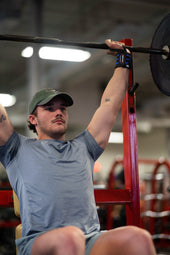
Unlock Your Potential: How to Get Stronger Gradually
-

Unlock Muscle Growth: Understanding What Is the 6-12-25 Rule
-

5 Lbs of Muscle in a Month? Let's Get Real
-

Get that celebrity booty in 10 easy to do work out routines
-
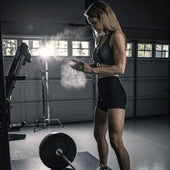
A.M. vs P.M. Workouts
-

Fasting Do’s and Dont's
-
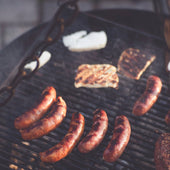
5 Surprising Sources of Protein
-
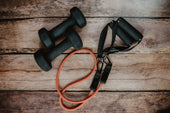
Home Workout Upgrade Must-haves
-
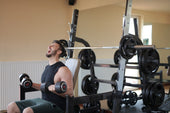
Top 5 Reasons You Aren’t Reaching Your Weightlifting Goals
-
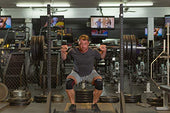
Squats: A Must in Weightlifting and for Strength Training
-
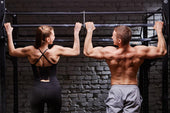
Weightlifting Routines for Men, Women and Beginners

